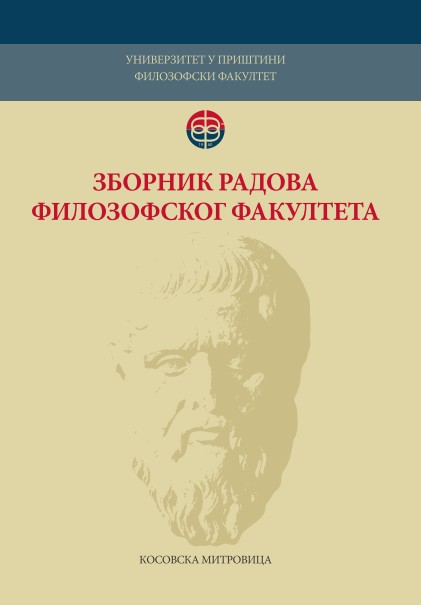Напомене о одликама графије и ортографије Атонског преписа Душановог законика
Remarks on Orthographic Characteristics of The Aton Transcription of Dušan’s Code
Author(s): Aleksandra M. AntićSubject(s): Language studies, Language and Literature Studies
Published by: Филозофски факултет, Универзитет у Приштини
Summary/Abstract: The paper describes the spelling of the consonants j, lj, nj, ć and đ and the groups consisting of the aforementioned consonants and vowels in The Aton Transcription of Dušan’s Code, written in the first half of the 15 ͭ ͪ century. The consonant j has traditionally been marked with the grapheme i. The use of ] and E for marking of the groups [ja] and [je] indicates that the traditions of Raška orthography have been followed. Graphemes e and j have often been used to mark group [je], which is a typical feature of the Resava orthography school. The group ju has mostly been marked with }; there are only few examples with the use of M and ou. The grapheme i has been used for writing the group [ji] while the group [jo] has been written with the graphemes w and O.The examples from the corpus point to three ways of writing the sounds lj and nj (volna, vol`ni, kralq; kon`mi, konq, kw³). The group lja was marked in two ways—with the graphemic groups l] and the group la. When it comes to the group [nja], we noticed that the combination with ] predominated [nja]: kon]. To mark the groups [lje] and [nje] the combinations lE and nE were used. There are few examples of the groups [ljo] and [njo], which point to the use of graphemic groups lo and nw. The graphemic combinations with } were used to indicate the groups [lju] and [nju]. Contrary to the group [lji], which was al-ways marked with li, the group [nji] was marked in three ways: knigou, pomanJi, prqvnQ˜. Two different ways of marking the consonant ć are seen in the examples of vlasteli;ikq, vlasteli;i®. The group [ća] has always been marked with k]. The combinations g], d], ga were used to indicate the group [đa]. The groups with E are dominant in marking the groups [će] and [đe]. The only registered ex-ample points to the use of kw to mark [ćo]. The groups [ću] and [đu] were al-most always written with the help of the graphemic groups k} and g}. More than one solution for writing the group [ći] has been registered: kouki, koukQ, vekQi. The group [đi] is written as kragi. The comparison of The Aton Transcription with The Baranja Transcription indicates a great similarity of these two manuscripts in terms of marking j, lj, nj, ć, đ and the groups consisting of the aforementioned consonants and vowels.
Journal: Зборник радова Филозофског факултета у Приштини
- Issue Year: 51/2021
- Issue No: 4
- Page Range: 105-128
- Page Count: 24
- Language: Serbian

